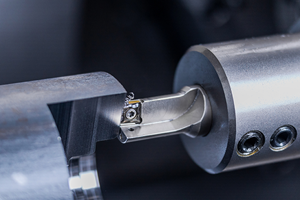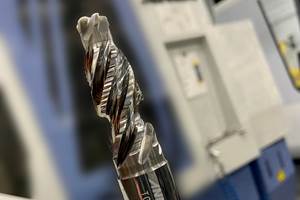Upgrade Your Cutting Tool Mindset
A handful of timely observations may boost the productivity of your thinking about cutting tools.
Share




Earlier this year, Iscar, the cutting tool manufacturer (U.S. headquarters in Arlington, Texas), brought together its North American dealers and many customers for a seminar called "Iscar Upgrade." At this event, the company announced its product development plans for 2005-2006. As top company executives led presentations detailing these developments, they expressed a number of general insights about cutting tool philosophy. A sample of these observations is presented here for anyone with an open mind about cutting tools.
1. The Costs That Count
Typically, cutting tools account for only 3 percent of total production costs in metalworking. Therefore, reducing cutting tool costs in itself doesn’t bring much to the bottom line. However, upgrading cutting tools is likely to yield a significant overall cost savings, even though cutting tool costs may be higher. Focus on cost per part, not the cost of cutting tools, as a key target.
2. Cutting Tools Are A System
Everyone in your IT department knows that a successful computer system is a combination of the right hardware and software. Keeping both hardware and software up to date is critical. Think of cutting tools in the same way. Cutter bodies and toolholders are the hardware, and indexable inserts are the software. When looking at an upgrade in insert technology, be sure to consider upgrades in toolholders and cutter bodies, and vice versa.
3. Coatings Aren’t Just For Inserts
Cutter bodies can be coated to get some of the most important benefits that high-tech coatings bring to carbide inserts. Hard coatings on cutter bodies resist wear from contact with hot chips moving at high speeds. Chips flow more readily through flutes because the coating gives the surface lubricity.
4. Multifunction Tools For Multitasking Machines
Few developments in machine design have had the impact that multitasking machines have had on productivity. But those added spindles, tool turrets and rotational axes mean tight clearances and a limited number of tool stations. To cope with these conditions, it is possible to have one toolholder with several multipurpose inserts that can do facing, ID turning, OD turning, drilling, counter drilling and internal threading without a tool change. Creative application of specially designed cutting tools contributes significantly to the flexible nature of multitasking machine tools.
5. Modular Thinking Is Lean Thinking
To keep cutting tool inventory at a more manageable level, consider modular tooling shanks that accept a variety of interchangeable solid carbide heads. Because the heads can be replaced or exchanged while the tool is clamped in the machine, setup time can be reduced. A set of long shanks that allow a cutting tool to reach to the bottom of a deep pocket or mold cavity is especially economical compared to the assortment of solid carbide tools needed to cover the same range. Another plus is that a steel shank can absorb an impact that might otherwise damage a carbide shank when, for example, a turning tool and the lathe spindle are not perfectly on center.
6. Don’t Neglect Power Consumption
Cutting tool manufacturers are working hard to develop products that reduce the power consumed by machine tools. Besides the energy savings (which are more significant than ever), cutting tools that require less power from the machine tool tend to last longer, cause less wear and tear on spindles and ways, and minimize vibration. A good example is that cutting tools requiring less thrust are allowing longer boring bars to be used without losing accuracy.
If power consumption doesn’t come up in the discussion of any new cutting tool, be sure to ask about it. A 10 percent reduction in cutting forces is likely to result in a 50 percent improvement in tool life.
7. Get Clamping Forces Right
When tightening the clamping screws after indexing an insert, don’t guess about the torque applied. Undertightening may allow the insert to chatter or prevent the process from holding tolerances. Overtightening may break the insert or the key. A torque wrench that automatically lights up to signal that proper tightening levels have been reached is a simple way to eliminate this uncertainty.
8. Can Your CAM Software Keep Up?
Programming for CNC operations is about more than getting the right speeds and feeds. Tool paths also must match the capability of the cutting tool. Not all CAM software allows the programmer to program the moves that optimize the performance of advanced cutting tools. Be sure your programming software is not holding you back.
Right now, advances in cutting tools appear to be ahead of the software developers.
9. No Vibes Are Good Vibes
In real estate, the three most important factors determining the value of a house or commercial property are location, location and location. In successful cutting tool applications, it’s vibration, vibration and vibration. Minimizing or eliminating vibration is usually a matter of controlling cutting forces so that they are directed to the most stable, most rigid element of the machining system. Examine every proposed change in tooling with an eye to how vibration is managed. That’s the key to prolonging tool life, protecting the spindle and improving surface finish.
10. The True Meaning Of "Indexable"
Be sure you are getting the full value of the original concept of carbide inserts with indexable edges. Look for styles that offer the most in multiple edges. Be sure the edges are truly usable. For example, some holders, such as certain indexable milling bodies, do not protect every edge; therefore, one or more of the insert edges is lost.
11. Combining Processes And Cutting Your Time In Cut
Being able to combine several processes into one makes it possible to increase efficiency and reduce costs. The time required for the separate machining cycles, as well as the time required for tool changes, can be reduced or eliminated. In addition, tooling costs can be reduced by reducing the number of tools required for a job.
12. Maximize Your Liquid Assets
Effective use of coolant is often a "make or break" part of a machining application, especially in hole making. For coolant-fed drills, getting the coolant to the cutting edges is only half the battle. Getting the chips out of the hole effectively is the other half. This means that coolant flow and chip flow have to be considered equally.
Coolant delivered through the insert itself is another strategy to examine. It should even be considered for in places that might seem unlikely, such as parting tools.
Related Content
Ceratizit's Updated Tooling Solutions Improve Machining Performance
The company has upgraded its EcoCut indexable inserts lineup, as well as introduced two new toolholding and workholding solutions.
Read MoreEmuge-Franken End Mill Wins ANCA's Tool of the Year Award
Emuge-Franken received the award for its specialized tool based on the new Cera-Cut end mill design.
Read MoreShoulder Milling Cuts Racing Part's Cycle Time By Over 50%
Pairing a shoulder mill with a five-axis machine has cut costs and cycle times for one of TTI Machine’s parts, enabling it to support a niche racing community.
Read MoreNidec Universal Head Enables Versatile Machining
The compact universal head enables better accessibility between the tool and the workpiece, as well as improved surface-finish quality, greater motion range and high-efficiency machining under ideal machining conditions.
Read MoreRead Next
5 Rules of Thumb for Buying CNC Machine Tools
Use these tips to carefully plan your machine tool purchases and to avoid regretting your decision later.
Read MoreRegistration Now Open for the Precision Machining Technology Show (PMTS) 2025
The precision machining industry’s premier event returns to Cleveland, OH, April 1-3.
Read MoreBuilding Out a Foundation for Student Machinists
Autodesk and Haas have teamed up to produce an introductory course for students that covers the basics of CAD, CAM and CNC while providing them with a portfolio part.
Read More













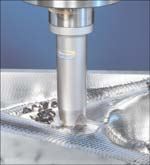
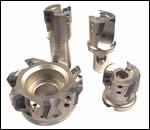
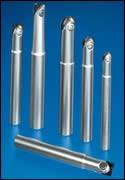


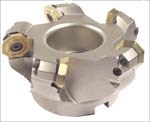
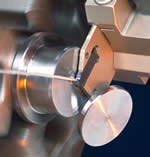
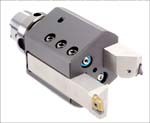




.png;maxWidth=300;quality=90)







